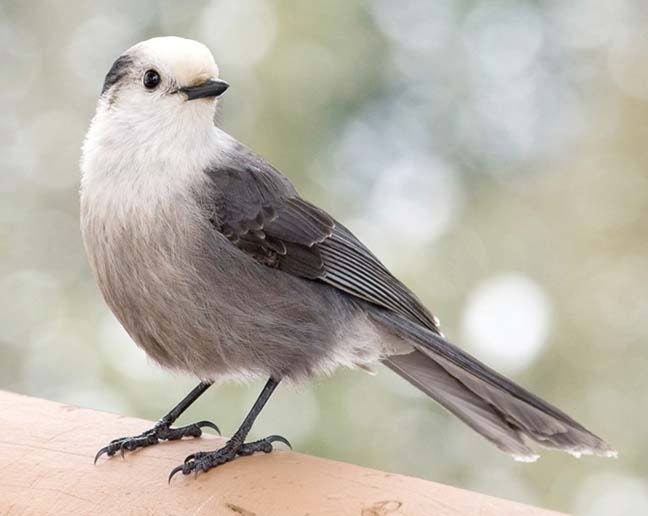Barry Coulter
We at the Cranbrook Townsman and Kimberley Bulletin are raising our voices and pens in support of the grey jay as the choice of Canada's national bird — should the nation ever choose to adopt a national bird.
Last week, the Royal Canadian Geographic Society announced its choice for Canada's national bird, saying the grey jay represents the best of our national traits.
The gray jay or grey jay (Perisoreus canadensis, also know as the Canada jay — so how appropriate is that) is a member of the crow and jay family (Corvidae) found in the boreal forests of every province in Canada.
This bird is more commonly known across the country as the whisky jack — and we at the Townsman/Bulletin can't think of a cooler name for this coolest of birds.
It has the same brain-to-body ratio as dolphins and chimpanzees, is lauded for its friendliness and intelligence, and spends its entire life in the Canadian woods.
Like their cousins — crows, ravens, and other jays — whisky jacks figure prominently in First Nations lore as mythological tricksters (isn't that something we all secretly wish we could be?). They're renowned in the folklore for warning people of predators in the woods and even leading lost travellers home by calling from tree to tree.

We are not alone, locally, in our support for the whiskey jack to serve as our icon, a could-be symbol of our national soul. The Rocky Mountain Naturalists are fulsome in the praise of Perisoreus canadensis.
"The deceptively cute grey jay is one of the most intrepid birds of North America, living in northern forests year-round and raising chicks in the dark of winter," writes the RMN's Daryl Calder.
"Non-migratory, it's North American range is almost entirely within Canada. It has a lot of spirit, is very hardy, intelligent and opportunistic. It has an incredible memory which allows it to find the food it has stashed earlier in the year.
"Highly curious and always on the lookout for food, grey jays eat just about anything from berries to small animals. During summer they hoard food in trees to sustain themselves through bleak winters. It uses sticky saliva to glue small food items to tree branches above the height of the eventual snow line. This food storage behaviour allows the jay to live so far north throughout the winter.
"At 2.5 ounces (70 grams) jay must consume 47 kilocalories per day as compared to 2,000 kilocalories for a human. They take advantage of whatever food they can find; landing on the back of a live moose to eat blood-filled winter ticks, tearing a baby bat away from it's mother and attacking larger, injured animals. Life in Canada is never easy.
"These stocky, fairly large songbirds, have incredibly thick, fluffy plumage that puffs up in cold weather. The legs and feet are enveloped, and even its nostrils are feathered."
The grey jay came out as top choice over the loon, snowy owl, black-capped chickadee and Canada goose — magnificent birds all, and deserving of honour and respect in their own right.
"It's curious that all five 'contenders' are rather handsome in their black & white plumage, lacking much, if any, coloration," Calder writes.
The federal government has not committed to naming a national bird — let alone the grey jay — but the Canadian Geographic Society argues that Canada's 150th anniversary in the coming year offers a perfect opportunity. We urge the Federal Government to make this decision after fitting discourse in the House of Commons, and we call on Kootenay-Columbia Member of Parliament Wayne Stetski to lend his voice in support.
"Also known as the Canada Jay, this species is a perfect fit as a National Bird," Calder writes. "Hopefully, Parliament will make the right decision and choose this amazing bird."
With files from Canadian Press
